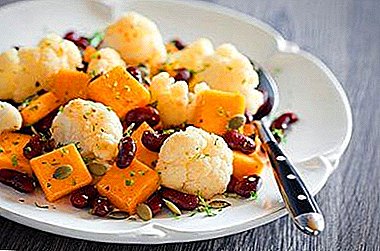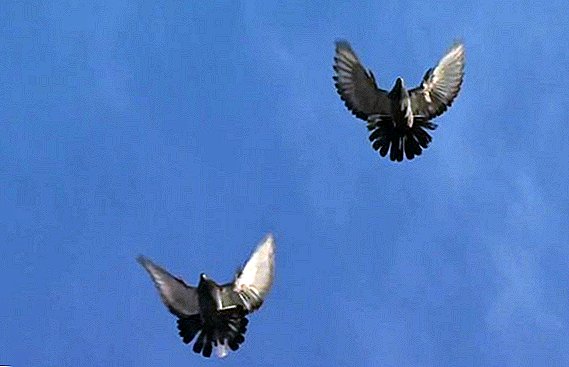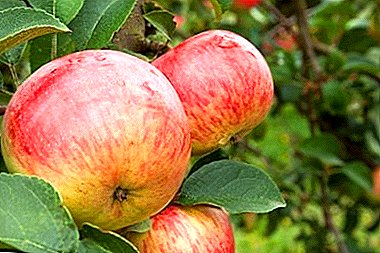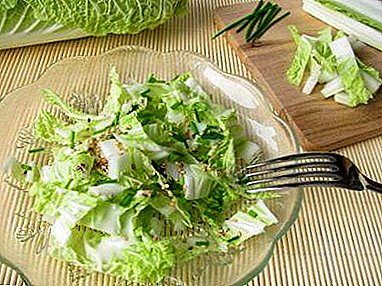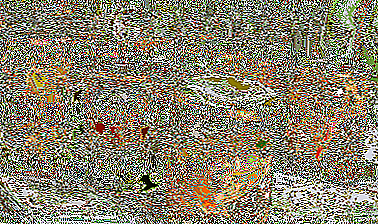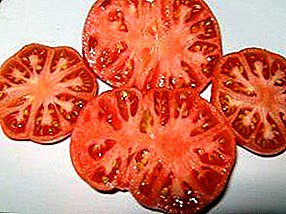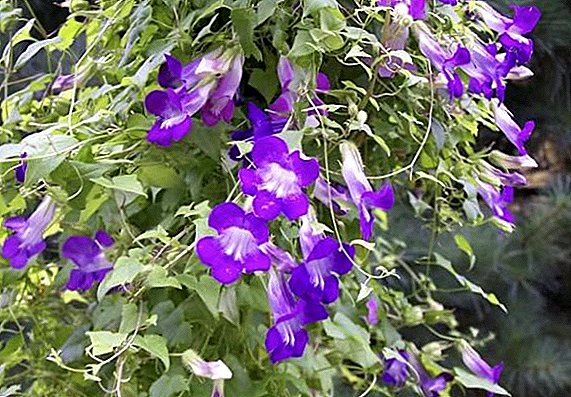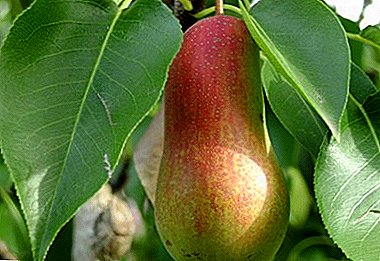
Pears - delicious fruit, soft, juicy, and most importantly healthy. Pears are low in calories and contain a lot of vitamins. Pears on our tables are by no means the rarest fruit, so they have been loved by many since childhood. Options for consumption of pears too much.
They can be eaten fresh, make juice from them, bake pies, make jam, add to tea or ice cream. There are even very expensive desserts like "pear in dough". It’s good that growing a pear in your garden is not so difficult.
It can be difficult to decide on a variety. To do this, you need to read a bunch of articles about each variety, and perhaps not one, because the information may not be enough.
In the article below, a description of the Talgar beauty variety, a photo of the fruit, gardener's reviews and which pear pollinator should grow next.
What kind of pears refers?
 First of all, you need to decide when you want to harvest these wonderful fruits.
First of all, you need to decide when you want to harvest these wonderful fruits.
Pears are of autumn, winter or early appearance.
In our case, the pear Talgar beauty poured late September - early October, fruit ripening occurs in the fall.
The variety is widely distributed in the Krasnodar and Stavropol Territories, Ukraine, and has been zoned in the North Caucasus region.
Autumn varieties also include Kupava, Vernaya, Karataevskaya, Thumbelina, Dressy Efimova.
Breeding history and breeding region
This variety has been developed In Kazakhstan by pollination of seed varieties Forest beauty. Its author A.N. Katseiko. Sometimes Talgar beauty Affectionately called "talgarochka".
Description varieties Talgar beauty
Consider separately the appearance of the tree and fruit.
Tree
The tree grows to medium height. Krone has wide pyramidal shape and medium thickness. The branches of the tree hang almost at right angles. The bark has a gray color and a flaky structure. The shoots are average in thickness, straight in shape.
Unlike the branches, they are not omitted. Possess brown color. The leaves are large, shaped like a chicken egg. They have a rich dark green color, unusual smoothness and brilliance of the surface. Leaf petiole long.
Fruit
 The fruits are quite large. Mass can be 150-200 grams. Average one pear weighs 170 grams. Sometimes giant pears grow 250 grams in weight.
The fruits are quite large. Mass can be 150-200 grams. Average one pear weighs 170 grams. Sometimes giant pears grow 250 grams in weight.
The form itself pear-shaped, but slightly elongated, at the top is sloping. The peel has a smooth and shiny.
The structure is oily. The color is light yellow, on the cloudless side there is a beautiful “blush”.
The pink part takes up more than half of the pear. A lot of subcutaneous spots are observed on the fetus, which are white on the pinkish edge and green on the yellow.
The Talgar beauty pear rests on a stem of medium length and thickness, having a slightly curved shape. The funnel is of a small size, not found in individual fruits. Calyx open.
The flesh is creamy or white. It has an average density. Its structure is fine-grained. The pulp can be characterized as crispy, but rather juicy. It tastes pleasant, pretty sweet.
Krasulia, Lada, Dekabrinka, Dessert Rossoshanskaya and Ilyinka can also boast excellent taste.
A photo






Specifications
Talgar Beauty - pear variety with high yields. Gona Fruits every year very abundantly. Stability to cold weather is also high. The variety is different and strong drought tolerance.
Decent drought tolerance is demonstrated by the Cathedral, Larinskaya, Svarog, Forest Beauty and Victoria.
Pollinators for pear Talgar are considered varieties: Conference, Favorite Clapp, Hoverla.
 Tree starts bear fruit after 4-5 years after landing, pretty quickly.
Tree starts bear fruit after 4-5 years after landing, pretty quickly.
Sometimes in the first 2-3 years of plant growth appear about three fruits. The ripening period comes in late September or early October.
But it is better to harvest a little earlier, and the taste and transportability are better. The blown pear does not tear, they hold fast to the branches.
Store in the refrigerator or cellar without dark spots fruits can until the end of winter.
Good yields are shown by the following varieties: Tonkowetka, Bere Bosk, Chizhovskaya, Bere Russkaya and Fairy.
Planting and care
Although Talgar beauty does not require special care, it does not mean that she does not need to be looked after. The most important thing is to choose The right place for landing.
Talgarochka loves a well-lit area, better on some slopes. Of course, the soil must be good, fertile. But still it must be fertilized and nourished.
Care is the following simple manipulations:
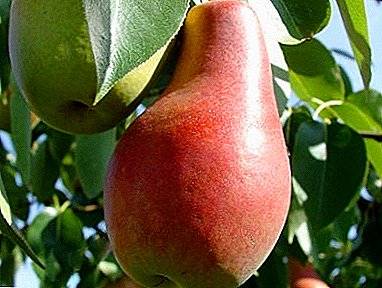 In the spring to carry out prevention against various pests and diseases.
In the spring to carry out prevention against various pests and diseases.- In early spring, loosen the soil around the tree and add manure / compost / humus.
- In the summer you should feed the plant with complex fertilizers.
- Requires abundant watering four times per season.
If you have a desire to get a Talgar beauty of small stature, then you can graft a dwarf stock on it. It will not affect the quantity and quality of the crop.
At late harvest, the appearance of dark spots on the peel and flesh and damage to taste is possible. But some gardeners note that at a very late harvest the fruits remain very tasty and saturated.
Diseases and pests
Dreadful enemies of all trees and plants are diseases and pests. Which is why huge the dignity of the Talgar beauty can be called disease resistance. Despite this, you need to know what diseases exist, and how to avoid them.
So, pear diseases:
- White spotting;
- False tinder;
- Pear mosaic;
- Pear flyer;
- Cancer of fruit trees;
- Dying off branches;
- //selo.guru/ptitsa/bolezni-p/gribkovye/parsha.html;
- Fruit rot;
- Subcutaneous viral blotchiness of pears;
- Pear rust;
- Cytosporosis;
- Bacterial burn;
- Black cancer
 To avoid the occurrence of these diseases, care must be taken to prevent damage to the bark. disinfection with chemicals, promptly remove fallen leaves.
To avoid the occurrence of these diseases, care must be taken to prevent damage to the bark. disinfection with chemicals, promptly remove fallen leaves.
Nick, November, Marble, Larinska and Hera are also resistant to diseases.
With pests everything is more complicated, there are many of them, they fly, crawl, and therefore need to get rid of them in different ways.
Can wrap a tree trunk in paper not allowing pests to rise higher, or coat with drying glue.
Then remove the pests and destroy. But there are other pests that are not so simple.
Hawthorn - butterflies, whose caterpillars eat up everything. In the spring to spray trees with insecticides.
Apple Blossom - Weevil, feeding on buds and buds, which dry up after a while. Effective trapping belt, described above, and processing drugs.
Oriental moth - its caterpillars eat out the tunnels in the shoots, the flesh is burning. Trapping belts are also productive.
Pear pruritus, gall mite - microscopic size pests that destroy the leaves.
Pear leaf / fruit gallitsa - mosquitoes that feed on leaves and / or other parts of plants, after which growths are formed. In the spring, treat pears with insecticides. Slaves - beetles that damage the wood, thereby causing gum treatment.
And many more similar to the above pests. They hit about the same areas of the tree, causing similar effects. The prevention of their appearance on the pear is the same. Therefore, to list all their names does not make sense. The main thing is to follow the general rules of care and disinfection described earlier.
 In conclusion, I would like to highlight the main advantages and disadvantages of the Talgar beauty. The advantages can include the following characteristics: high winter hardiness, drought resistance and disease resistance.
In conclusion, I would like to highlight the main advantages and disadvantages of the Talgar beauty. The advantages can include the following characteristics: high winter hardiness, drought resistance and disease resistance.
High yields and precocity are also major advantages. Undoubtedly, you should not forget about the excellent taste and appearance. There you can also bring long storage time.
Talgarochka has few disadvantages. Is that some will not like the crispness of the fruit and change their color during late harvest.
This variety favors most gardeners. Talgar beauty has a pleasant taste, smell and many healthy and dietary properties.
Watch the video about pear variety Talgar beauty:


 In the spring to carry out prevention against various pests and diseases.
In the spring to carry out prevention against various pests and diseases.